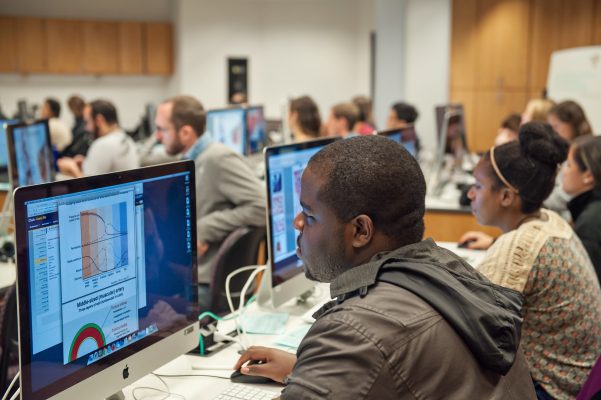
(Leisa Thompson, Michigan Medicine)
The U-M Medical School is undergoing a curriculum transformation to develop future physician leaders in health care.
In the previous model, students spent the first two years of their education focusing on science and the second two years in the clinic working with patients. In the new curriculum, students are exposed to the clinical aspects of medicine in their first year, allowing students to learn about the science of medicine at the same time as patient care.
In support of the curriculum transformation, Health Information Technology & Services (HITS) has been driving technological innovations in partnership with the Office of Medical Student Education (OMSE). A recent outcome of this collaboration is a tool called Learning Outcomes, which aggregates individual student assessment outcomes in one location. Learning Outcomes provides faculty and students with a single mechanism for tracking student progress, providing important data to inform goal development and learning plans. It also offers the opportunity to focus on student strengths, and the dexterity to address gaps in learning sooner rather than later.

“The ability to review medical student progress in this holistic fashion strengthens the overall medical student experience,” said Johmarx Patton, director of the HITS Education Informatics & Technology team. “Medical students are benefiting from coaching and other aspects of this current curriculum that were not as easily accomplished when I was a student.”
The efficiency of the system goes beyond dashboards. HITS developers and OMSE staff alike used to spend many hours manually compiling data for use in Dean’s Letters (Medical Student Performance Evaluations to accompany their residency applications), Academic Review Board reporting and hearings, and general tracking routinely done by counselors. Tools like Learning Outcomes help streamline these labor-intensive processes.
Medical School Assistant Dean for Curriculum Michelle M. Daniel, M.D., said the dashboard is very valuable to the UMMS educational community.
“The ability to review medical student progress in this holistic fashion strengthens the overall medical student experience.”
“As we move towards full actualization of competency based education, our ability to measure achievement in core competencies beyond medical knowledge is critical,” said Daniel, who is also an assistant professor of emergency medicine and learning health sciences. “A major barrier in this process historically has been data management.
“Learning Outcomes allows us to assimilate hundreds of inputs from diverse sources to make decisions about learners’ progression in communication, patient care, professionalism, and other competencies. The system facilitates holistic review by our competency committees, improves the ability of our faculty coaches to provide meaningful feedback, and helps learners look at their own data for themes with an aim of self-improvement.”
“This system is a success—it’s better for business in so many ways. The developers, Mark Schneyer and Leif Myklebust, worked closely and thoughtfully with several different groups both internal and external to HITS, and carefully crafted an incredibly useful tool that helps our customers,” said Paul Morrison, assistant director—HITS Software Delivery. “Additionally, it was difficult and expensive for HITS to support three, labor-intensive legacy applications; now it’s not. It’s a win for everyone, and that’s why it’s exciting.”
